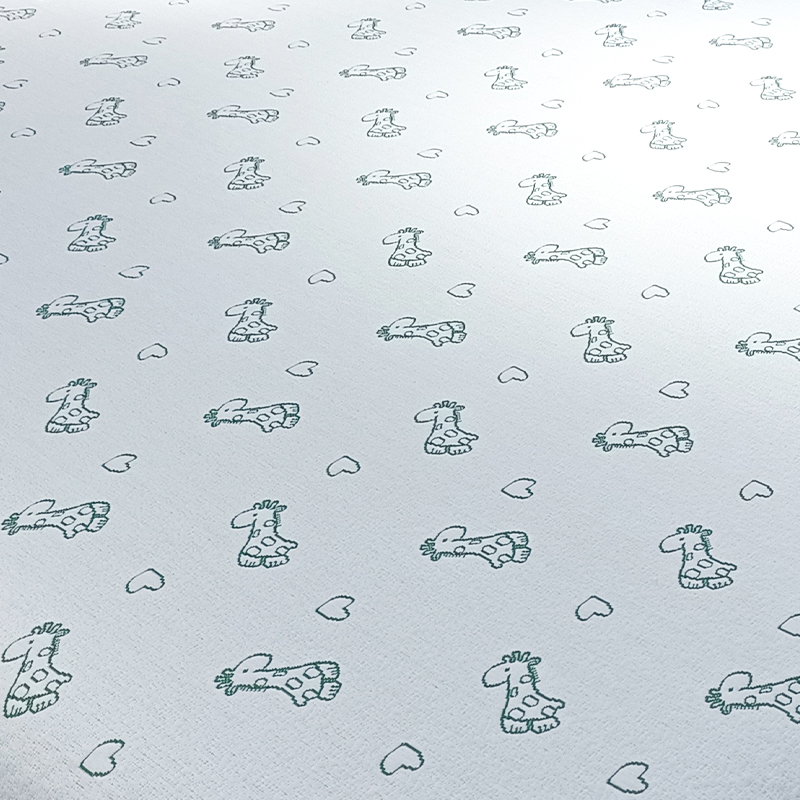The elasticity of knitted mattress fabric allows it to stretch and conform to the contours of the body, providing personalized support and enhancing comfort. This flexibility helps distribute body weight evenly, reducing pressure points and improving overall sleep quality. Elasticity also enables the fabric to maintain its shape and support characteristics over time, ensuring lasting comfort and durability.
1. Adaptive Comfort and Personalized Fit:
Knitted mattress fabrics are designed with high elasticity, meaning they can stretch and return to their original shape. This elasticity is pivotal in providing adaptive comfort because it allows the fabric to conform to the unique curves and contours of the body. When you lie down, the fabric stretches and molds to your body shape, creating a custom fit that provides optimal support in the areas where it's needed most. This personalized fit helps to distribute body weight evenly, reducing the likelihood of pressure points, which are common causes of discomfort and disrupted sleep.
2. Pressure Relief and Support:
Elastic knitted fabrics excel in distributing weight uniformly across the mattress surface. As the fabric stretches, it reduces concentrated pressure on specific areas such as the shoulders, hips, and lower back. By alleviating pressure points, the fabric helps in maintaining proper blood circulation and preventing numbness or soreness that can result from prolonged pressure. This quality is especially beneficial for individuals who suffer from joint pain or discomfort, as it provides a softer and more forgiving surface that supports the body without creating undue pressure.
3. Enhanced Motion Isolation and Freedom of Movement:
The elasticity of knitted mattress fabric also contributes to better motion isolation. When one part of the mattress compresses under weight, the surrounding areas can stretch and move independently. This characteristic minimizes the transfer of motion, ensuring that movements on one side of the bed do not disturb a partner on the other side. Furthermore, the fabric’s flexibility allows sleepers to change positions effortlessly. The ease with which the fabric adapts to movement helps maintain consistent support, no matter how often you shift during the night, which is crucial for restless sleepers or those who frequently change positions.

4. Durability and Longevity:
Elasticity significantly enhances the durability of the mattress fabric. Knitted fabrics, due to their stretchable nature, can withstand repeated stretching and compression without losing their structural integrity. Unlike non-elastic fabrics that may become saggy or lose shape over time, elastic knitted fabrics are resilient and can return to their original form. This ability to recover ensures that the mattress maintains its supportive properties and aesthetic appeal for a longer period, providing a more durable and cost-effective solution.
5. Breathability and Temperature Regulation:
Another advantage of elastic knitted fabrics is their ability to enhance airflow. The natural gaps between the knitted loops allow for better ventilation, helping to regulate temperature by allowing heat and moisture to escape. This breathability is crucial in maintaining a comfortable sleeping environment, preventing the build-up of heat that can lead to discomfort and sweating. The elasticity helps in maintaining these gaps even as the fabric stretches and moves, ensuring consistent air circulation throughout the mattress's lifespan.
6. Versatility in Design and Function:
Elastic knitted fabrics offer versatility in design, enabling the incorporation of various textures, patterns, and functional enhancements like moisture-wicking or anti-microbial properties. This versatility allows manufacturers to create mattress fabrics that not only offer superior comfort and support but also meet specific aesthetic and functional requirements. For instance, knitted fabrics can be engineered to provide a soft, luxurious feel or a firmer, more supportive surface depending on the needs of the user.
7. Maintenance and Cleanliness:
Elasticity also contributes to easier maintenance. The stretchable nature of knitted fabrics means they can be fitted snugly over the mattress, reducing the likelihood of wrinkles or shifting that can trap dirt and debris. A well-fitted mattress cover can be easily removed and washed, helping to maintain hygiene and extend the mattress's lifespan. This ease of care ensures that the mattress remains clean and fresh, contributing to a healthier sleeping environment.